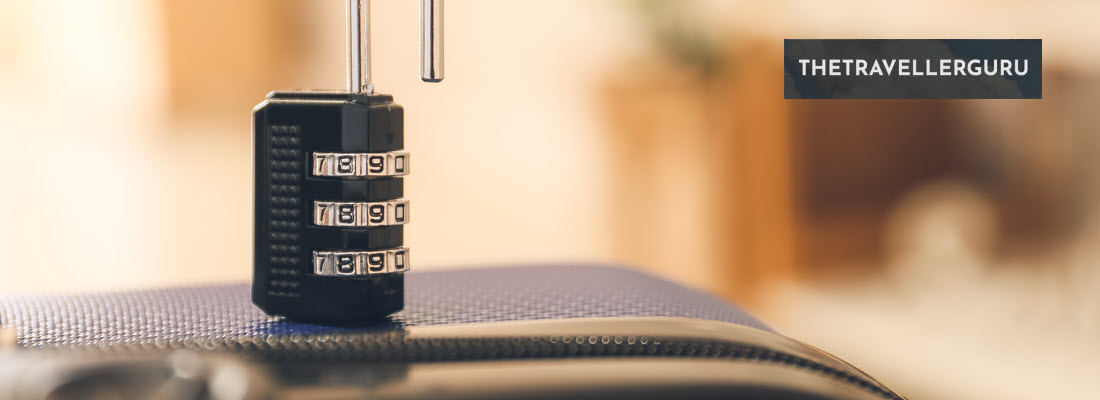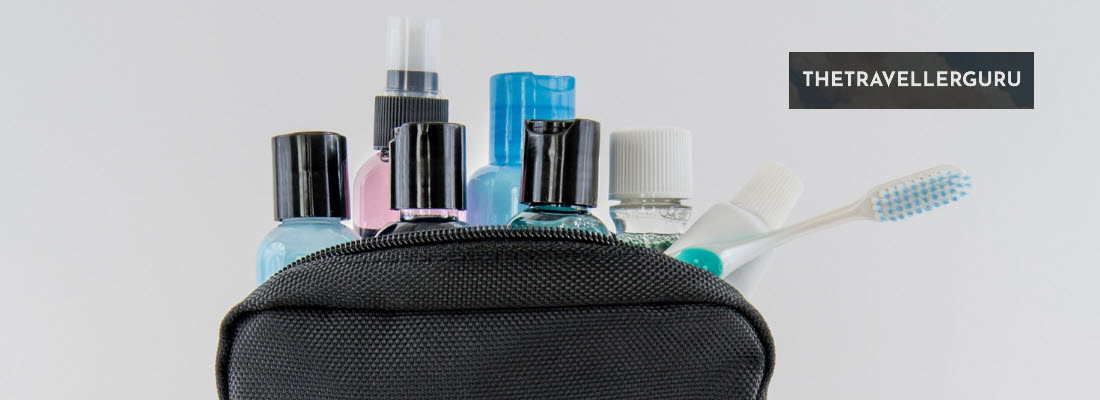Hey there travel enthusiasts and welcome to my post where we will cover one of the big debates of travel – hard side vs. soft side suitcases. As we know, when it comes to travel, luggage is one of the essential components that can make or break your trip and one of the most important decisions you’ll make is whether to choose a hard side or soft side suitcase.
The right choice will largely depend on your personal preferences and travel needs. If you prioritize durability, protection and weather resistance, a hard side suitcase may be the better option. On the other hand, if flexibility, weight and organization are more important to you, a soft side suitcase may be the way to go.
Hard Side vs. Soft Side Suitcases
When it comes to choosing between soft side vs hardside luggage, there is no one-size-fits-all answer. Your personal preferences and travel needs will ultimately dictate the best choice for you. Let’s then have a look at the ins and outs of each type so that you can make an educated decision at least.
Let’s start with the hard side suitcase side of things:
What are Hard Side Suitcases?
Hard side suitcases have gained popularity in recent years largely due to their resilient construction and modern, sleek appearance. The rigid materials used in their construction include polycarbonate, a lightweight, durable and impact-resistant material that offers a balance between strength and weight, making it a popular choice for many travelers.
ABS, another frequently used material, is a type of thermoplastic that is more affordable than polycarbonate but slightly less durable. Aluminum, known for its strength and durability, is often used in premium hard side suitcases, but it tends to be heavier and more expensive than its counterparts.
Hard side suitcases are available in various sizes, ranging from small carry-on sizes to large checked luggage options. This variety allows travelers to find the perfect suitcase for their needs, whether they’re taking a short weekend trip or embarking on an extended vacation.
In addition to their protective qualities, hard side suitcases often feature modern, stylish designs and come in an array of colors, patterns and finishes allowing travelers to express their personal style while on the go. Some models even include innovative features like built-in USB charging ports, spinner wheels for easy maneuverability and integrated TSA-approved locks for added security.
Check out these: Best Hard Side Suitcases for Travel

Pros of Hard Side Suitcases
Let’s see why you might want to get yourself a hard side suit case:
- Durability and Protection – The primary advantage of hard side suitcases is their durability. The rigid materials used in their construction can withstand rough handling and protect your belongings from potential damage. This makes them ideal for carrying fragile items such as electronics or souvenirs.
- Weather Resistance – Hard side suitcases are more resistant to the elements than soft side suitcases. They can better protect your belongings from rain, snow and dirt ensuring your items stay dry and clean throughout your journey.
- Easy to Clean – Hard side suitcases are easy to maintain as they can be wiped clean with a damp cloth. This is particularly helpful if your luggage gets dirty during travel or if you want to sanitize your suitcase during a trip.
- Security – Hard side suitcases generally offer better security than soft side suitcases. They often come with integrated TSA-approved locks and the rigid construction makes it more difficult for thieves to cut through the material or force the suitcase open.
Check out these: Hard Side Carry On Cases
Cons of Hard Side Suitcases
Ok, now for some reasons to choose a soft side option instead:
- Weight – One of the main drawbacks of hard side suitcases is their weight. The sturdy materials used in their construction can make them heavier than soft side suitcases, which could be an issue if you need to adhere to strict airline weight limits.
- Lack of Flexibility – Hard side suitcases are less flexible than soft side suitcases, making it more challenging to fit them into tight spaces such as overhead compartments or car trunks. This can be particularly problematic if you tend to overpack or need extra space for souvenirs.
- External Pockets – Hard side suitcases typically lack external pockets, which can make organizing and accessing your belongings more difficult. This may be inconvenient for travelers who like to have quick access to items such as passports, travel documents or snacks during their journey.
What are Soft Side Suitcases?
Soft side suitcases, also known as soft shell luggage, are luggage pieces made from flexible materials such as nylon, polyester or ballistic nylon. These materials allow for a more lightweight and adaptable design compared to hard side suitcases, which are made from rigid materials like polycarbonate or aluminum.
Soft side suitcases are a popular choice for many travelers due to their flexibility and lighter weight. The pliable materials used in their construction enable them to conform more easily to tight spaces, such as overhead compartments or car trunks and can be more forgiving when overpacked.
Many soft side suitcases also feature expandable compartments, allowing for additional packing space when needed. This can be a lifesaver for travelers who tend to accumulate items throughout their trip or need extra space for bulky items like clothing or souvenirs. And finally, soft side suitcases often come with multiple external pockets and compartments, making it easier to organize and access your belongings during travel.
While soft side suitcases offer a number of advantages, they generally provide less protection for fragile items and are more susceptible to wear and tear than hard side suitcases. Furthermore, they may not be as resistant to the elements such as rain or dirt.
Check out these: Best Soft Side Suitcases for Travel

Pros of Soft Side Suitcases
Let’s see why you might want to get yourself a soft side suit case:
- Flexibility – The most significant advantage of soft side suitcases is their flexibility. The pliable materials used in their construction allow for easier packing and more efficient use of space. This is particularly helpful if you tend to overpack or need extra room for souvenirs.
- Weight – Soft side suitcases are generally lighter than hard side suitcases due to their flexible materials. This can be an essential factor for travelers looking to minimize luggage weight to avoid airline fees or simply make it easier to carry their bags.
- External Pockets and Organization – Soft side suitcases often come with multiple external pockets, making it easier to organize and access your belongings during travel. This can be especially helpful for items you need to reach quickly such as travel documents, passports, or snacks.
- Expandability – Many soft side suitcases feature expandable compartments allowing for additional packing space when needed. This can be a lifesaver for travelers who tend to accumulate items throughout their trip or need extra space for bulky items like clothing or souvenirs.
Check out these: Soft Side Carry On Cases
Cons of Soft Side Suitcases
Ok, now for some reasons to choose a hard side option instead:
- Less Durability and Protection – One of the main drawbacks of soft side suitcases is their reduced durability compared to hard side suitcases. The flexible materials used in their construction make them more susceptible to wear and tear, especially when subjected to rough handling.
- Weather Resistance – Soft side suitcases are generally less resistant to the elements than hard side suitcases. While some soft side suitcases are made from water-resistant materials, they are still more likely to allow water or dirt to seep through seams or zippers, potentially damaging your belongings.
- Security – Soft side suitcases are generally less secure than hard side suitcases, as they can be more easily cut open or forced open by thieves. Some soft side suitcases do come with built-in TSA-approved locks, but the overall security provided by the flexible material is typically less robust than that of a hard side suitcase.
How Do I Choose?
So, are soft or hard suitcases better? Look, as we have discussed above, choosing between hard side and soft side suitcases is really based on personal preferences, travel needs and priorities.
Protection and durability are important aspects to consider and if you prioritize safeguarding fragile items or want a suitcase that can withstand rough handling, a hard side suitcase may be the better choice. On the other hand, if you require a suitcase with flexibility and the ability to adapt to tight spaces or accommodate extra items, a soft side suitcase may be more suitable. Its flexible materials, like nylon or polyester, allow for easier packing and conforming to various spaces.
Weight is another significant factor for many travelers. Soft side suitcases are generally lighter than hard side suitcases due to their flexible materials, making them a better option if you wish to minimize luggage weight to avoid airline fees or make carrying your bags more manageable.
Soft side suitcases typically provide more external pockets and organizational features compared to hard side suitcases, making it easier to access your belongings during your journey. However if you travel to destinations with unpredictable weather or want to ensure your belongings stay dry and clean, hard side suitcases offer better resistance to elements like rain, snow, or dirt compared to soft side suitcases.
Finally, security should be considered when choosing between hard side and soft side suitcases. Hard side suitcases generally provide better protection against theft due to their rigid construction and integrated TSA-approved locks.
Conclusion
There you have it, my take on the old hard side vs soft side luggage debate. I would be pleased to know how this article helped you, and as usual, let me know of your experiences with them.
Also, please do not hesitate to comment below if you have any questions, concerns, or corrections or would like me to check anything else out for you.
Until next time.
Have fun
Paul






